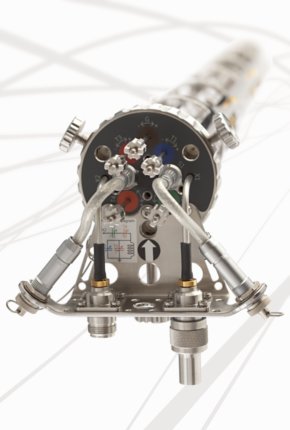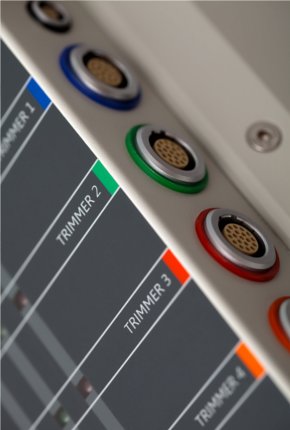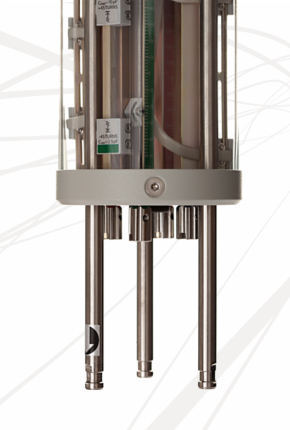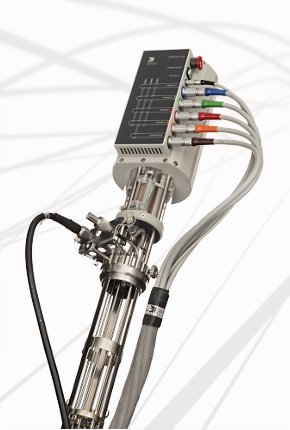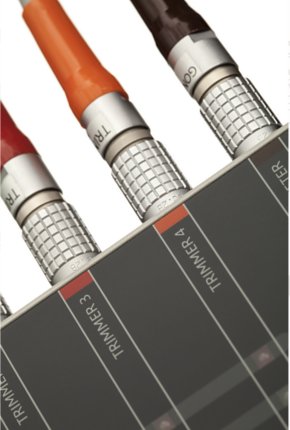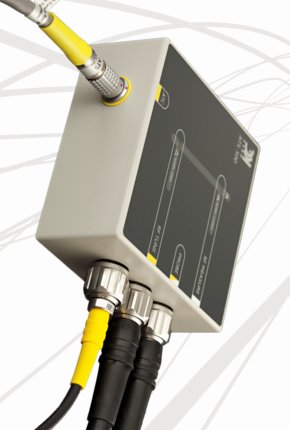AT-PMSC-1 wide line NMR probe system
Automatic probe tuning and reorientation of the sample down to 4K
Are you in possession of a precious sample containing exotic nuclei with spectral line widths of several MHz, broadened by electric quadrupolar or magnetic interactions? Does the recently discovered phase transformation in your frontier research multiferroic system take place at cryogenic temperatures? You want to study its exciting new physics using NMR, only to discover that your commercial probe was not designed for low temperature applications? Well, if any of the above is true and you do not have engineering resources to design and manufacture a dedicated system yourself, then you may consider TEHO’s new AT-PMSC-1 low-temperature wide line autotuning and goniometer NMR probe system.
Description
AT-PMSC-1 is an automatic tuning and matching system for NMR spectroscopy, consisting of a wideline research grade goniometer probe, detachable stepper motor drive unit, high/low power RF switch, and CompactPCI-based controller unit with touchscreen interface. It provides for automatic tuning of RF resonant circuits in NMR experiments with X-nuclei resonance frequencies up to 400 MHz. Its application areas span from wide line NMR of disordered solids where spectra are acquired using point-by-point frequency scan (frequency-stepping) methods, to investigations of smeared phase transitions via NMR of low-sensitivity nuclei or low concentration probes where detuning takes place due to temperature-dependent capacitance and inductance of the trimming elements of the NMR detection circuit.
Easy integration
AT-PMSC-1 is typically integrated into the RF detection circuit of the spectrometer by an in-line connection of the remotely controlled RF switch, immediately in front of the probe. The RF switch is used to redirect the RF line of the NMR probe from the autotuning controller to the NMR spectrometer during the signal acquisition mode. In this way, operation of AT-PMSC-1 that is independent of spectrometer’s hardware is achieved; no RF or I/O connectivity between the spectrometer and AT-PMSC-1 is required.
Remote Control
If the autotune functionality is needed in the course of experiment, it can be controlled via the RS-232 connection from the workstation which controls the operation of the spectrometer. Specifically, the synchronization of automatic tuning of AT-PMSC-1 with the spectrometer is established through AT-PMSC-1 procedure calls from within the spectrometer automation sequences (e.g. Python or C-based automation programming). This functionality is provided with all modern spectrometers.
Components
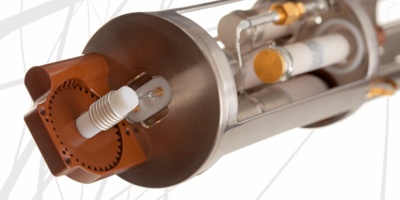
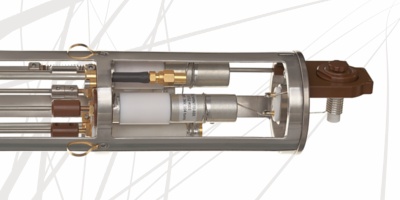
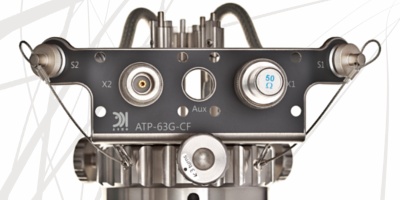
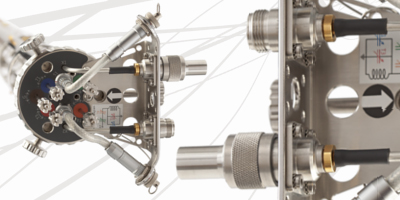
ATP-CF wide line multipurpose probe is designed to fit into the Oxford Instruments SpectrostatNMR cryostats (models 86/62 and 70/49). The probe is built to last: the housing material is highly corrosion-resistant non-magnetic stainless steel, the probehead base plate is made of titanium and the goniometer is machined from Vespel, delivering an exceptional wear resistance and hassle-free performance even at cryogenic temperatures.
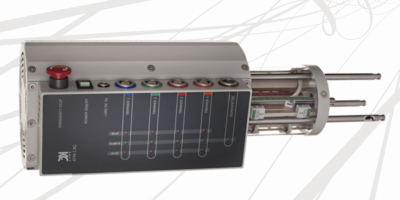
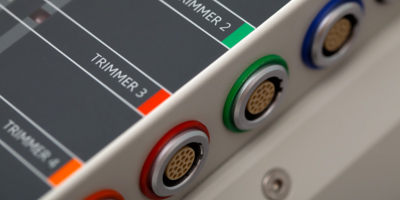

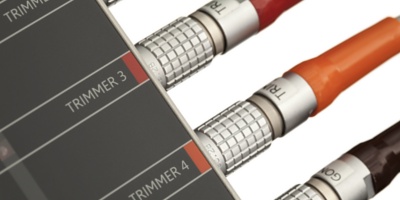
ATM-C4G is a rapidly detachable stepper motor drive for mounting onto ATP-CF, with trimmer status LED display panel. The unit is equipped with industry-standard high power hybrid stepper motors and differential encoders so that it can be controlled with conventional stepper motion controllers. Your expensive, high-Q, cryogenic trimmer capacitors are protected from mechanical damage by adjustable limit switches.
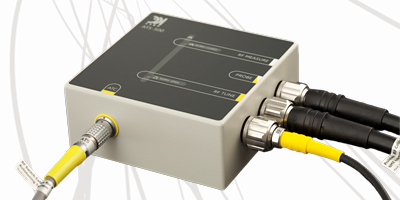
ATS-500 RF switch with status LEDs allows for integration of the AT-PMSC-1 into RF excitation/detection circuit of an existing NMR spectrometer.
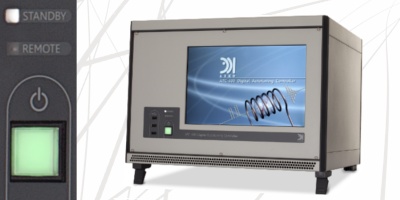
ATC-400 digital controller unit with touchscreen display is the heart of the AT-PMSC-1 autotuning system. It provides for manual and automatic tuning of RF circuits with up to four trimming elements as well as for control of probe goniomenter, both in interactive and remote modes.


